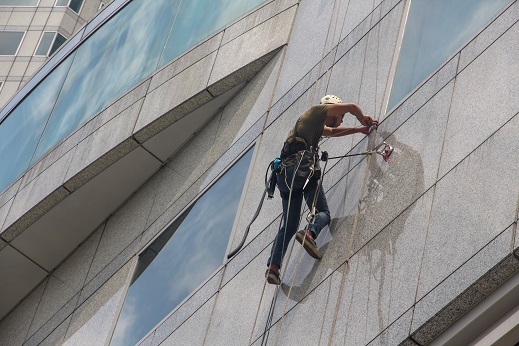Full Body Harnesses for Fall Protection

In the ever-evolving world of occupational safety and construction, one thing remains constant: the paramount importance of worker safety. When it comes to working at heights, ensuring the well-being of your employees is not just a legal obligation but also a moral one. That's where full body harnesses for fall protection come into play. In this article, we'll delve deep into the world of fall protection, exploring the significance of full body harnesses and how they can be a game-changer in safeguarding lives and preventing accidents in various industries.
Understanding the Gravity of Fall Hazards
Before we dive into the specifics of full body harnesses, it's crucial to comprehend the gravity of fall hazards in the workplace. Falls from heights are one of the leading causes of serious injuries and fatalities across industries like construction, roofing, telecommunications, and more. According to the Occupational Safety and Health Administration (OSHA), falls accounted for a staggering 401 out of 1,061 total construction fatalities in 2019. This alarming statistic underscores the urgent need for effective fall protection measures.
The Role of Full Body Harnesses
Full body harnesses are a cornerstone of fall protection systems. They are meticulously designed to distribute the forces of a fall across the wearer's body, reducing the risk of injury. These harnesses are composed of straps, buckles, and attachment points that work in harmony to keep the wearer secure in high-risk environments. Let's break down the key components and benefits of full body harnesses:
1. Straps and Webbing
The straps and webbing in a full body harness are engineered to provide maximum strength and durability. Made from high-quality materials, they are capable of withstanding substantial forces, ensuring the safety of the wearer during a fall. The snug fit of the harness minimizes the risk of slipping or dislodging, even under extreme conditions.
2. Buckles and Fasteners
Quick-release buckles and fasteners are an integral part of a full body harness. These mechanisms allow for easy and swift donning and doffing of the harness, saving precious time in emergency situations. Moreover, they are designed to stay securely fastened during normal use, adding an extra layer of protection.
3. Attachment Points
Attachment points are strategically placed on the harness to accommodate various fall arrest systems. These points are rigorously tested to ensure their reliability, enabling workers to connect to lifelines, lanyards, or other fall protection harnesses and equipment without the fear of detachment.
Selecting the Right Harness
Choosing the appropriate full body harness is not a one-size-fits-all endeavor. It demands a meticulous evaluation of the specific work environment, tasks, and potential fall hazards. Here are some critical factors to consider when selecting the right harness:
1. Work Environment
Different industries have unique work environments, each with its own set of challenges. Whether you're in construction, window cleaning, or telecommunications, your choice of harness should align with the demands of your job. Factors such as height, mobility, and access points all play a role in determining the ideal harness.
2. Weight and Comfort
Worker comfort is paramount. Prolonged use of a harness can be taxing on the wearer. Hence, it's essential to choose a harness that's lightweight and ergonomically designed. Adjustable straps ensure a snug fit, reducing discomfort during extended work periods.
3. Certifications and Compliance
Always opt for full body harnesses that meet or exceed industry standards and certifications. Compliance with regulations such as OSHA, ANSI, and CSA ensures that your harness is designed and tested to withstand the rigors of the job.
Conclusion
In a world where safety should always come first, investing in high-quality full body harnesses for fall protection is not just a wise decision; it's a moral imperative. These harnesses serve as the last line of defense against the devastating consequences of falls from heights. By understanding their significance, components, and how to select the right one, you're taking a crucial step towards creating a safer work environment for your employees.
Remember, when it comes to fall protection, there's no room for compromise. Prioritize safety, equip your workforce with the best full body harnesses, and ensure that everyone returns home safely at the end of the day.




